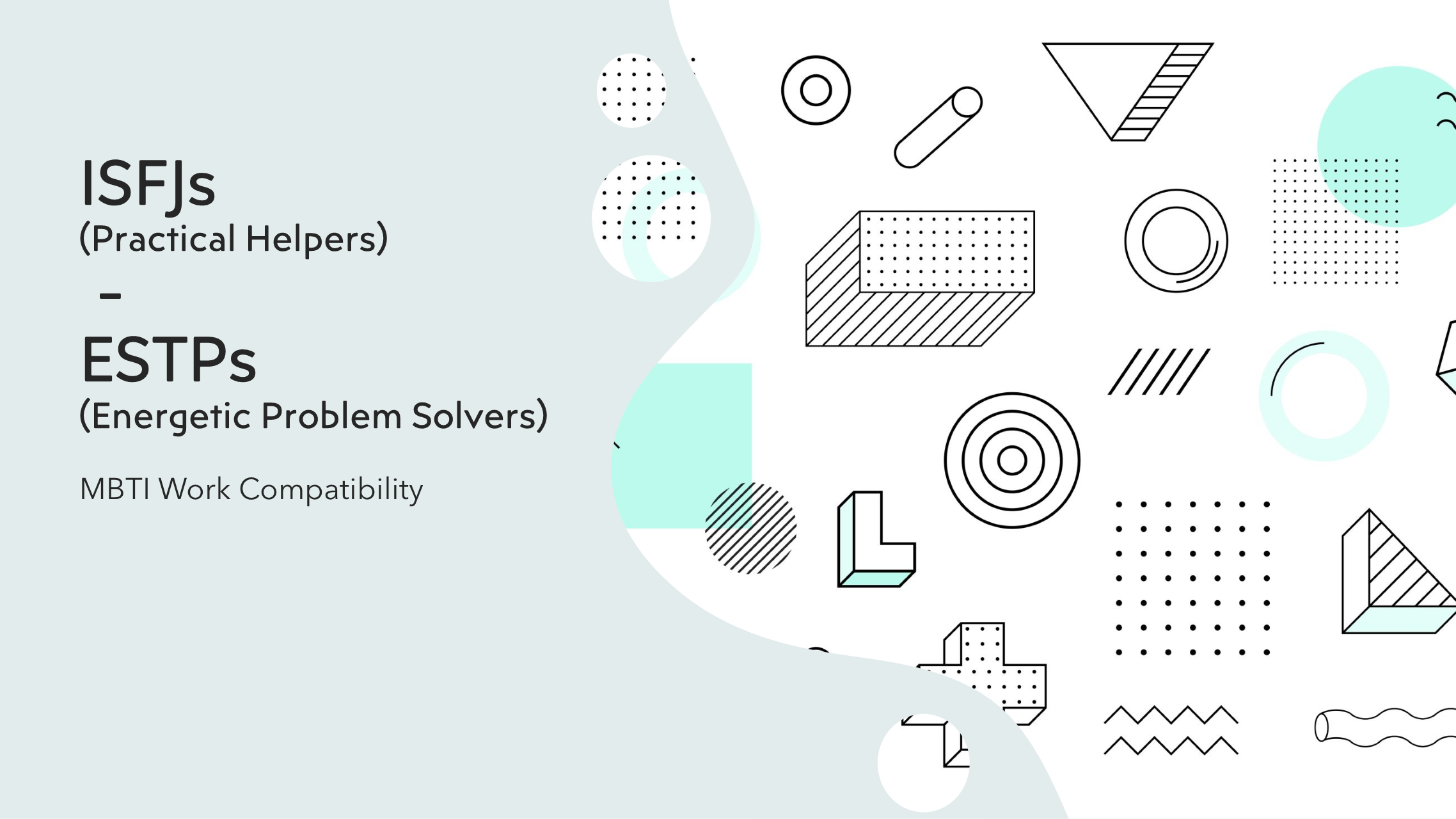
MBTI Work Compatibility - How ISFJs Can Work Better With ESTPs
In the realm of human personalities, the interplay between
ISFJ (Introverted, Sensing, Feeling, Judging) and ESTP
(Extraverted, Sensing, Thinking, Perceiving) personalities
presents an intriguing dynamic. While these personalities
exhibit differences, understanding and embracing each other's
distinct qualities can foster a harmonious relationship. Let's
explore how ISFJs and ESTPs can bridge their disparities and
cultivate a mutually enriching connection.
Discovering Shared Ground
Despite apparent contrasts, ISFJs and ESTPs share fundamental
similarities that lay the groundwork for a strong
relationship. Both personalities value practical matters and
employ a direct communication style. Their mutual interest in
community connections and shared history forms a solid basis
for their bond. However, ISFJs' preference for order may clash
with ESTPs' spontaneity, necessitating adaptability from both
partners.
Navigating Communication Styles
Effective communication serves as the linchpin of any relationship, necessitating an understanding of each other's communication nuances. ISFJs, inclined towards introspection, often assume the role of listeners in interactions with their more outgoing ESTP counterparts. While this dynamic can be comfortable, ESTPs must ensure ISFJs have ample space to express themselves. Mutual respect for communication preferences fosters deeper connection and understanding.
Harmonizing Values
Values shape our perceptions and influence relationship
dynamics. ISFJs and ESTPs share a respect for tradition and
duty, albeit with nuanced differences. ISFJs prioritize
emotional connection, while ESTPs lean towards objective
reasoning, occasionally appearing emotionally distant.
Acknowledging and respecting these differences allows both
partners to appreciate diverse perspectives and evolve
together.
Navigating Everyday Life
In daily life, ISFJs and ESTPs may encounter challenges
stemming from their contrasting organizational approaches.
ISFJs thrive on structure but may feel burdened by assuming
more responsibilities. Collaborative solutions, grounded in
open communication and mutual respect, mitigate potential
imbalances and foster harmony in the relationship.
Collaborating Professionally
In professional settings, ISFJs and ESTPs can complement each
other's strengths. ESTPs, with their entrepreneurial spirit
and adaptability, benefit from ISFJs' meticulous planning and
attention to detail. By creating an environment that values
each other's contributions, ISFJs and ESTPs can thrive as
collaborative partners, leveraging their unique qualities for
mutual success.
Conclusion
While ISFJs and ESTPs may approach life differently, their relationship holds immense potential for growth and enrichment. Embracing their distinct qualities, fostering open communication, and finding common ground enable ISFJs and ESTPs to navigate their dynamic interplay with grace and understanding. Ultimately, it's their willingness to learn from each other and adapt that strengthens their bond and cultivates a fulfilling relationship journey.